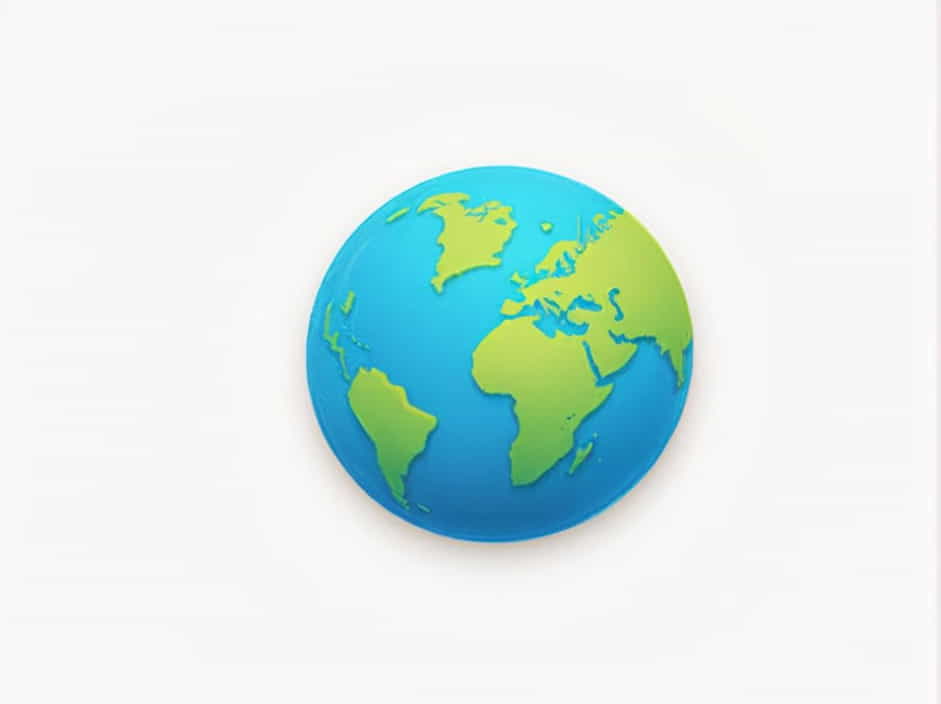The Earth’s structure is divided into several layers, each with unique characteristics and functions. The uppermost layer of the Earth is called the crust. It is the thinnest and outermost layer that forms the Earth’s surface, where all living organisms exist.
Understanding the Earth’s crust is essential for geology, environmental science, and natural resource management. It plays a crucial role in plate tectonics, earthquakes, and the formation of landscapes.
This topic will explore the composition, types, functions, and significance of the Earth’s crust, along with the challenges it faces due to natural and human activities.
What Is the Uppermost Layer of the Earth?
The Earth’s crust is the outermost solid layer that forms the foundation of continents and ocean basins.
It is composed of various rocks and minerals and acts as a protective shell for the deeper layers of the Earth.
The crust is relatively thin compared to the layers beneath it, with an average thickness of 5 to 70 kilometers (3 to 43 miles).
Types of Earth’s Crust
There are two main types of the Earth’s crust, each with different composition, thickness, and density.
1. Continental Crust
- Forms the landmasses we live on.
- Made of granite-rich rocks, which are less dense but thicker.
- Averages 30 to 50 kilometers in thickness.
- Older than oceanic crust, with some parts dating over 4 billion years.
2. Oceanic Crust
- Found beneath the ocean floors.
- Made of basalt-rich rocks, which are denser but thinner.
- Averages 5 to 10 kilometers in thickness.
- Younger than continental crust, as it is constantly being recycled through tectonic activity.
The interaction between these two types of crust is responsible for mountain formation, volcanic activity, and earthquakes.
Composition of the Earth’s Crust
The crust is made up of various elements, minerals, and rock types. The most abundant elements in the crust include:
1. Oxygen (O) – 46.6%
- The most abundant element, found in silicate minerals like quartz and feldspar.
2. Silicon (Si) – 27.7%
- A key component of silicate rocks that make up most of the crust.
3. Aluminum (Al) – 8.1%
- Found in clay minerals and feldspars.
4. Iron (Fe) – 5.0%
- Present in basaltic rocks and responsible for the red color of some soils.
5. Calcium (Ca), Sodium (Na), Potassium (K), and Magnesium (Mg)
- Essential for forming various rock types like limestone, granite, and basalt.
Functions of the Earth’s Crust
The crust plays several vital roles in Earth’s geological and biological processes.
1. Supports Life
- Provides the habitat for humans, animals, and plants.
- Contains soil, water, and essential nutrients needed for life.
2. Stores Natural Resources
- Holds minerals, metals, fossil fuels, and groundwater.
- Resources like gold, coal, and petroleum are extracted from the crust.
3. Regulates Earth’s Climate
- The interaction between rocks, soil, and the atmosphere helps control the climate.
- Carbon storage in limestone and fossil fuels impacts global temperatures.
4. Drives Geological Processes
- Tectonic activity in the crust causes earthquakes, volcanic eruptions, and mountain formation.
- The crust’s movement shapes landscapes and ocean basins.
How the Crust Interacts with Other Layers
The Earth’s crust is part of a larger system that includes the mantle, outer core, and inner core.
1. Crust and Mantle Interaction
- The mantle lies beneath the crust and consists of semi-solid rock.
- Heat from the mantle drives plate tectonics, causing the crust to shift and change.
2. Crust and Core Influence
- The Earth’s core generates the magnetic field, which affects the crust’s mineral deposits.
- Movements within the core impact volcanic and seismic activity in the crust.
These interactions explain why the Earth’s crust is constantly evolving through tectonic shifts, erosion, and volcanic activity.
Threats to the Earth’s Crust
The crust is facing increasing challenges due to both natural processes and human activities.
1. Soil Erosion
- Deforestation, agriculture, and overgrazing cause the removal of fertile topsoil.
2. Mining and Resource Extraction
- Excessive mining depletes mineral resources and damages ecosystems.
3. Earthquakes and Volcanoes
- Tectonic movements cause natural disasters that reshape the crust.
4. Climate Change
- Rising temperatures affect glaciers, sea levels, and erosion rates.
Protecting the crust is essential for sustaining life, ecosystems, and natural resources.
How to Protect and Preserve the Earth’s Crust
1. Sustainable Land Use
- Reforestation helps prevent soil loss and desertification.
- Sustainable agriculture improves soil fertility.
2. Reduce Mining Impacts
- Using eco-friendly mining techniques and recycling minerals reduces damage.
3. Disaster Preparedness
- Investing in earthquake-resistant buildings and early warning systems saves lives.
4. Climate Action
- Reducing greenhouse gas emissions minimizes the effects of climate change on landforms.
By adopting sustainable practices, we can help protect the Earth’s crust for future generations.
The uppermost layer of the Earth, called the crust, is essential for life, geological activity, and natural resource distribution.
- It consists of continental and oceanic crust, made up of various minerals and elements.
- It plays a critical role in supporting ecosystems, regulating climate, and driving geological processes.
- The crust faces threats from erosion, human activities, and natural disasters.
By understanding and preserving the Earth’s crust, we can ensure a stable and sustainable environment for the future.
